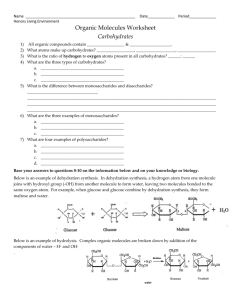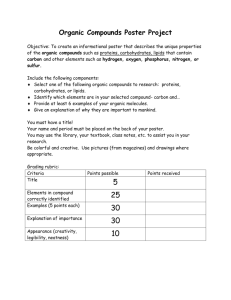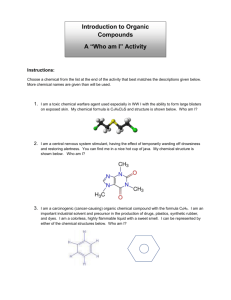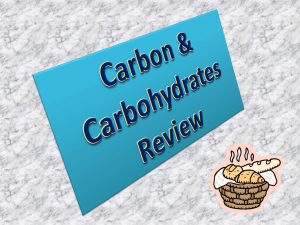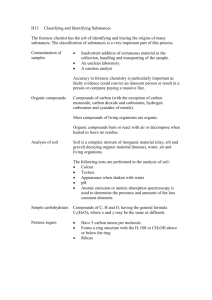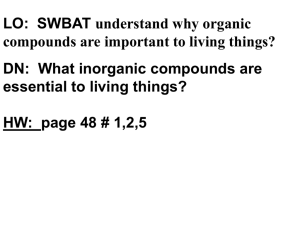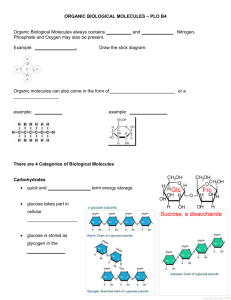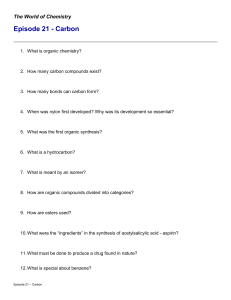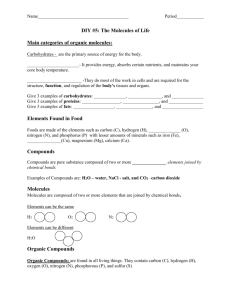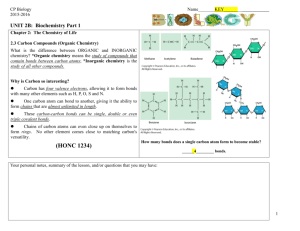Inorganic/organic compounds
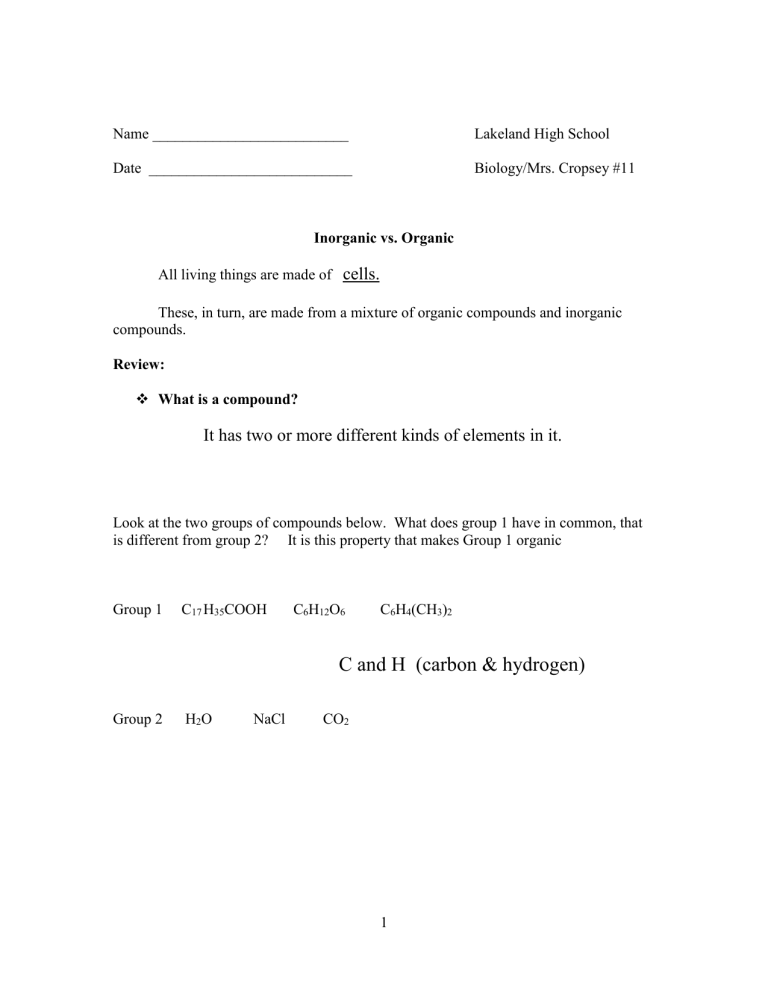
Name __________________________ Lakeland High School
Biology/Mrs. Cropsey #11 Date ___________________________
Inorganic vs. Organic
All living things are made of cells.
These, in turn, are made from a mixture of organic compounds and inorganic compounds.
Review:
What is a compound?
It has two or more different kinds of elements in it.
Look at the two groups of compounds below. What does group 1 have in common, that is different from group 2? It is this property that makes Group 1 organic
Group 1 C
17
H
35
COOH C
6
H
12
O
6
C
6
H
4
(CH
3
)
2
C and H (carbon & hydrogen)
Group 2 H
2
O NaCl CO
2
1
Definition:
Organic compound
Compounds that contain both carbon and hydrogen.
Found in all living things.
Examples:
C
6
H
12
O
6 (glucose)
Inorganic compound
Does not have both carbon and hydrogen.
Found in living and non-living things.
Examples:
H
2
O
CO
2
NaCl
2
The four types of organic compounds that are found in living things are:
Proteins, carbohydrates, lipids, nucleic acids
These compounds are made by joining together smaller repeating units – over and over again. The process that connects the smaller pieces to form the larger compounds is called dehydration synthesis.
Definition:
Dehydration synthesis
The process of forming larger compounds from smaller pieces---in the process, water is lost.
The opposite of dehydration synthesis is hydrolysis.
Definition:
Hydrolysis water.
The breaking down of a large molecule into smaller pieces by adding
So, to summarize:
Process Starts with Ends with Example
Dehydration synthesis
Hydrolysis
Small molecules
Big molecules
Big molecules
Small molecules
Growth, repair
Digestion
3
Carbohydrates
Carbohydrates are organic compounds and are commonly called sugars.
What elements are in carbohydrates?
Carbon, hydrogen and oxygen (CHO)
Carbohydrates are used for:
Energy !
Therefore, carbohydrates are an essential part of our diet.
How do you think a lack of carbohydrates would make a person feel?
Tired
The word saccharide is used to describe sugars. one sugar Monosaccharide –
Disaccharide – two sugars
Polysaccharide - many sugars
A sugar called glucose is the most important monosaccharide on Earth. Glucose is the immediate source of energy for your cells. It is created by photosynthesis in plants.
The molecular formula for glucose is:
C
6
H
12
O
6
4
Plants and animals have the ability to store glucose until it is needed by the body.
Glucose molecules are strung together to form polysaccharides.
What is the process that creates these large molecules?
Dehydration synthesis
Definitions:
Starch - stored energy in plants.
(ex. potato, wheat, rice)
Cellulose - found in walls of plant cells
Gives structure
Few organisms can digest it (roughage in diet)
Glycogen - stored energy in humans
Stored in liver and muscles
5
One sugar-called: monosaccharide
Examples
:
Glucose
Carbohydrates
Organic compound
Used for:
Energy
Many sugars-called
Polysaccharide
Examples
:
Starch
Used for
:
Stored energy
Structure
6
Summary Questions
1.
Which is an example of an organic compound? a) C
6
H
12
O
6 b) H
2
O c)HCl
How do you know it’s organic?
2.
Give 2 examples of inorganic compounds
3.
Is the following reaction an example of dehydration synthesis or hydrolysis?
C
12
H
22
O
11
+ H
2
O
How do you know?
C
6
H
12
O
6 +
C
6
H
12
O
6
7
